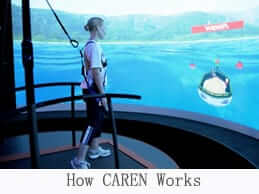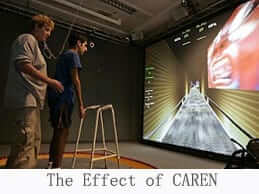Computer Assisted Rehabilitation Environment (C.A.R.E.N) and Human Body Model (HBM) Software
August 11, 2023
We are very excited to all our patients who suffer problems in the lower extremities and low back pain.
The HBM have been developed as a system that performs a full biomechanical analysis of human movement in real-time. The analysis that is performed by the system is identical to existing approaches for inverse kinematic analysis ,inverse dynamic analysis , and muscle emg.
We have developed a system that performs a full biomechanical analysis of human movement in real-time. The analysis that is performed by the system is identical to solve the analysis.
Intersegmental forces and moments are useful for orthopedic questions related to our patients who suffer problems in the lower extremities and low back pain.
We’re the only private clinic in the US using a Computer Assisted Rehabilitation Environment—a state of the art rehabilitation technology developed for the military. Traditionally, physical therapists taught healthy movement by demonstrating a motion, then correcting patients as they repeat it. At our clinic, patients interact with a virtual reality environment while C.A.R.E.N captures their motion with 12 infrared cameras and provides real-time feedback. By removing human error from physical therapy, we save time and can deliver unparalleled results.
Mechanical forces are invisible by nature. Normally we can only see the results of the forces applied to complications and the lack of replacement parts would command a slew of unpleasant consequences. Force distribution management must be quick and precise. This goal is attainable now with Human Body Modeling (HBM) software.
HBM makes it possible to determine at a glance the magnitude of the problem and devise corrective measures with a scientific precision.
Applications
HBM can be applied in diagnostics, rehabilitation, fundamental and applied research, sports medicine, ergonomics and various other fields. Some of the applications are:
Diagnostics:
- Balance compensation anomalies and related postural stability problems.
- Force-related postural stability problems.
- Gait problems arising from inefficient muscle use.
- Early identification of degenerative muscular conditions and dysfunctions.
- Muscle force distribution visualization for detection of core stability problems.
- Means of identifying neural substrates of task difficulty and cognitive effort.
- Muscle recruitment and control in hemiparesis, TBI and neglect patients.
- Early identification of dysto cp (involuntary contractions).
- Early detection of muscular dystrophies (i.e. ALS, MS).
- Understanding balance compensation strategies and control mechanisms.
- Musculoskeletal systems behavior.
- Explorations of the muscle forces interactions with spatial environments.
- Better understanding of sensory inputs & motors in posture and motion.
- Muscle imbalances in athletes with recurrent injuries.
- Identification of technique deficiencies and performance inhibitors.
Rehabilitation:
- Appropriate postural adjustments.
- Well timed protective extensions, reactions to perturbations.
- Improving control of weak muscles, timing of muscle groups activity.
- Muscle coordination and strength with amputees and joint replacements.
- Rehabilitation and training of Osteoarthritis patients.
- Training for core stability control and improvement.
- Neuro rehabilitation (spinal cord injuries and diseases, paresis, TBI, neglect).
- Control of dystonic movements.
- Prosthetics fitting and dynamic alignment.
- Post-surgical knee rehabilitation, ACL reconstruction and squat exercises.
- Hamstrings/quad ratio assessment and training.
- Rehabilitation of athletes with recurrent injuries.
Video below provides a brief introduction to C.A.R.E.N































